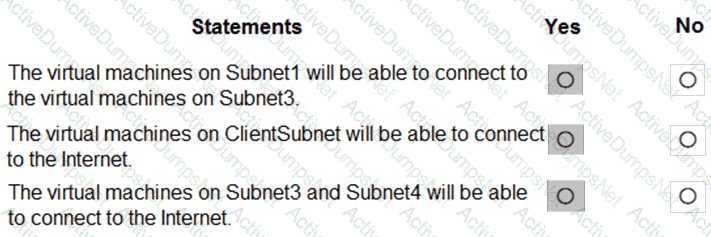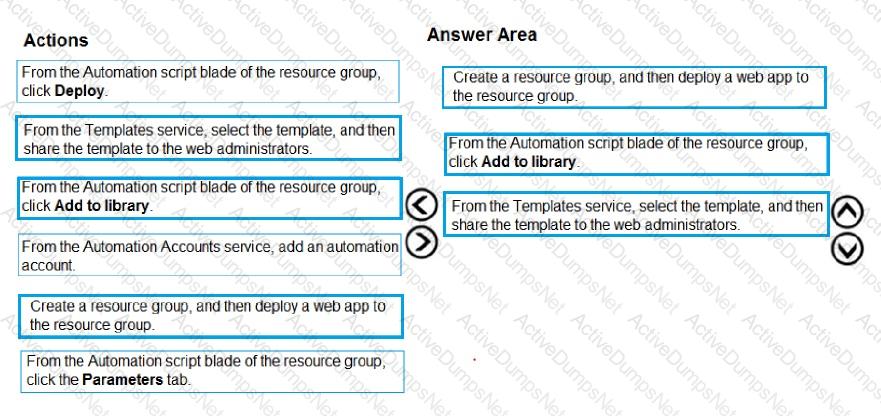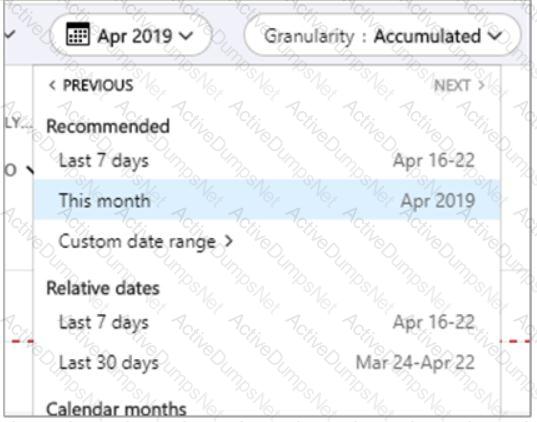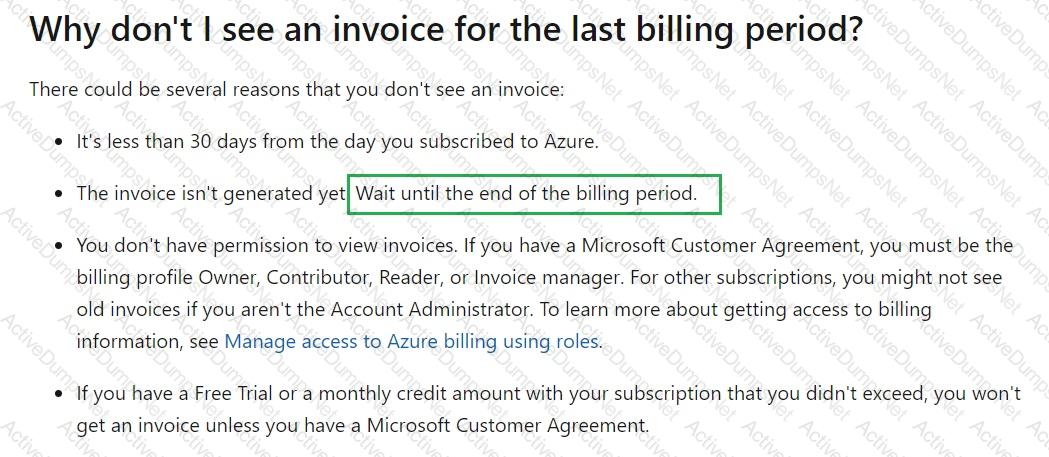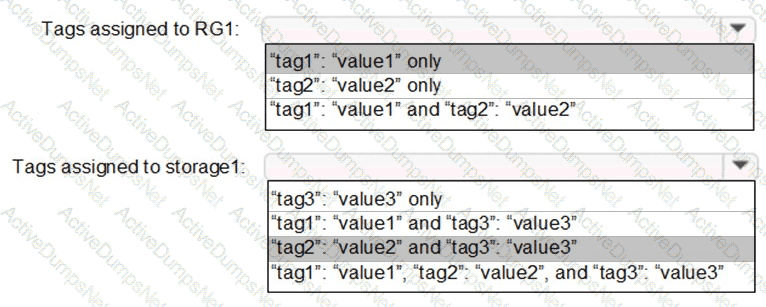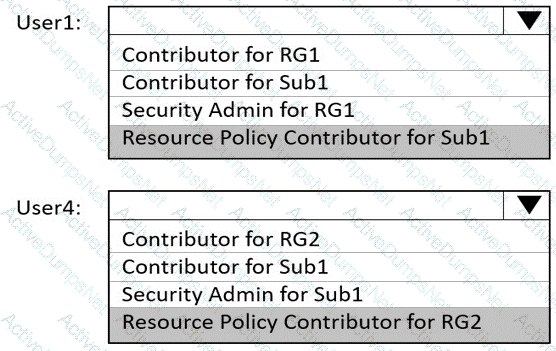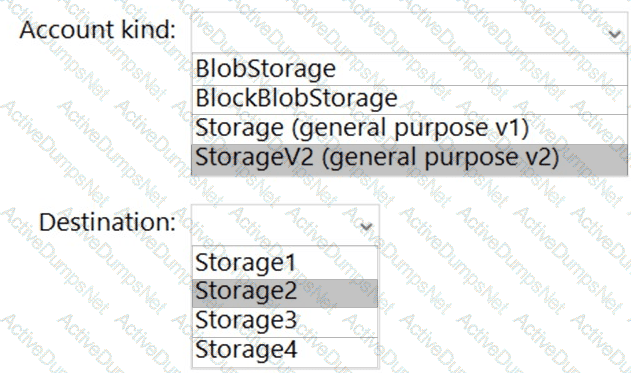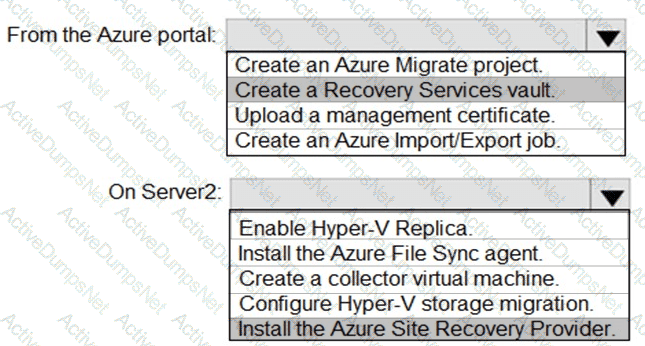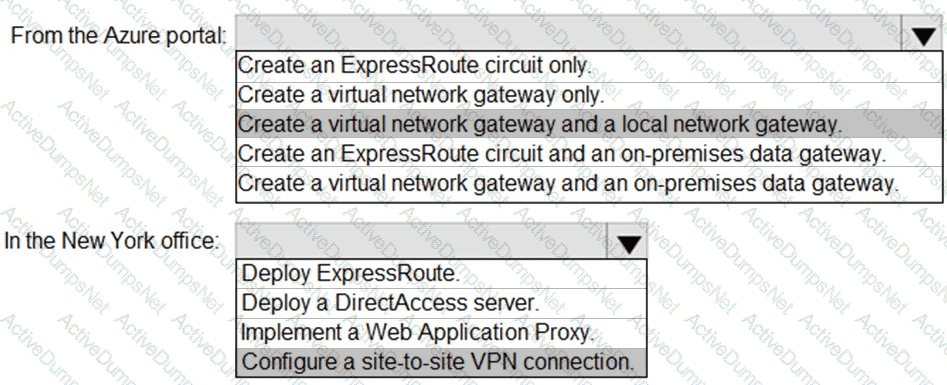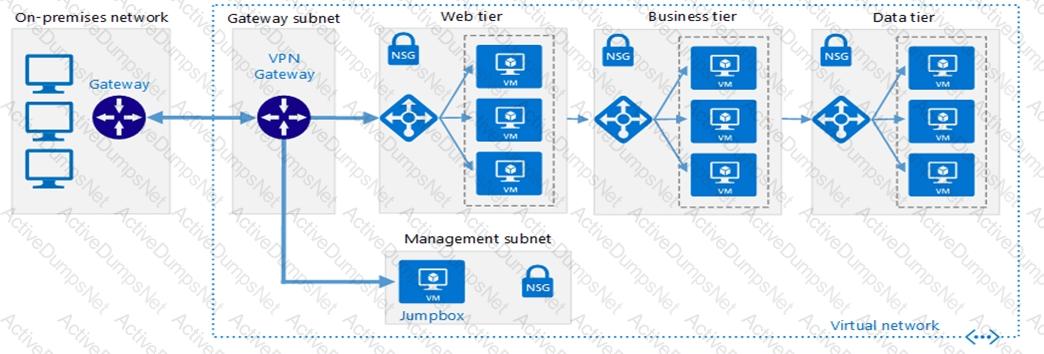Microsoft AZ-104 Microsoft Azure Administrator Exam Practice Test
Microsoft Azure Administrator Questions and Answers
You need to implement the planned changes for the storage account content. Which containers and file shares can you use to organize the content?
You need to configure encryption for the virtual machines. The solution must meet the technical requirements.
Which virtual machines can you encrypt?
You need to configure WebApp1 to meet the technical requirements.
Which certificate can you use from Vault1?
You implement the planned changes for Scope1.
You need to ensure that Scope1 meets the technical requirements.
What can you encrypt by using Scope1?
You implement the planned changes for cont2.
What is the maximum number of additional access policies you can create for cont2? To answer, select the appropriate options in the answer area.
NOTE: Each correct selection is worth one point.
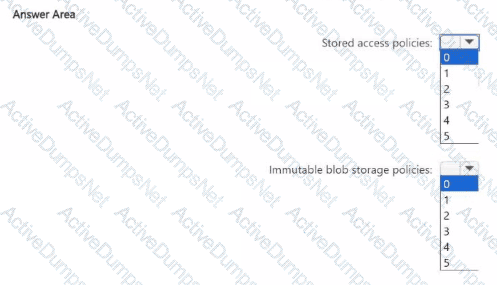
You need to implement the planned changes for the new containers.
Which Azure services can you use for each image? To answer, select the appropriate options in the answer area.
NOTE: Each correct selection is worth one point.
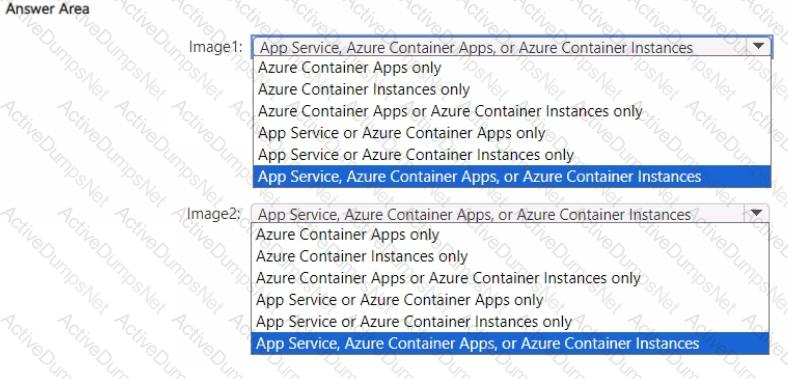
You need to configure Azure Backup to meet the technical requirements for cont1 and share1.
To what should you set the backup frequency for each resource? To answer, select the appropriate options in the answer area.
NOTE: Each correct selection is worth one point.
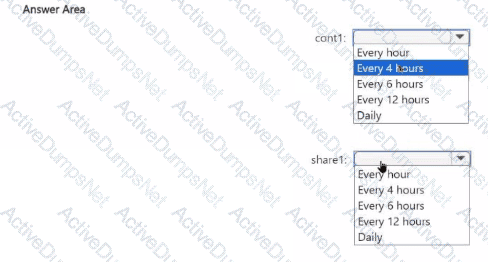
You need to implement the planned changes for DCR1. Which type of query should you use?
You need to implement the planned changes for User1.
Which roles should you assign to User1, and for which resources? To answer, select the appropriate options in the answer area.
NOTE: Each correct selection is worth one point.
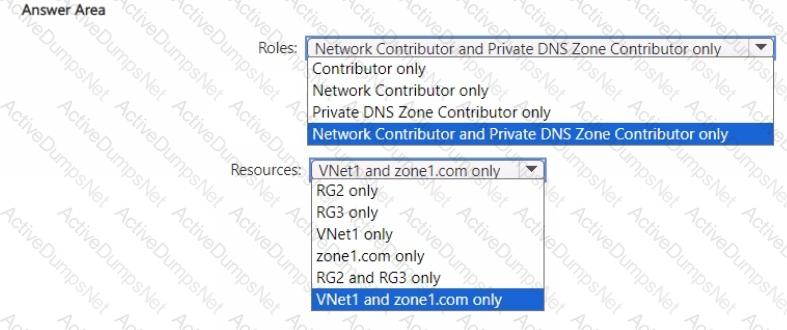
You are evaluating the connectivity between the virtual machines after the planned implementation of the Azure networking infrastructure.
For each of the following statements, select Yes if the statement is true. Otherwise, select No.
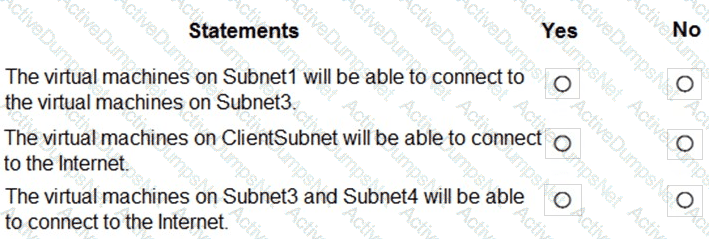
You need to prepare the environment to meet the authentication requirements.
Which two actions should you perform? Each correct answer presents part of the solution.
NOTE Each correct selection is worth one point.
You need to define a custom domain name for Azure AD to support the planned infrastructure.
Which domain name should you use?
You need to define a custom domain name for Azure AD to support the planned infrastructure.
Which domain name should you use?
You need to prepare the environment to meet the authentication requirements.
Which two actions should you perform? Each correct answer presents part of the solution.
NOTE: Each correct selection is worth one point.
You need to prepare the environment to ensure that the web administrators can deploy the web apps as quickly as possible.
Which three actions should you perform in sequence? To answer, move the appropriate actions from the list of actions to the answer area and arrange them in the correct order.
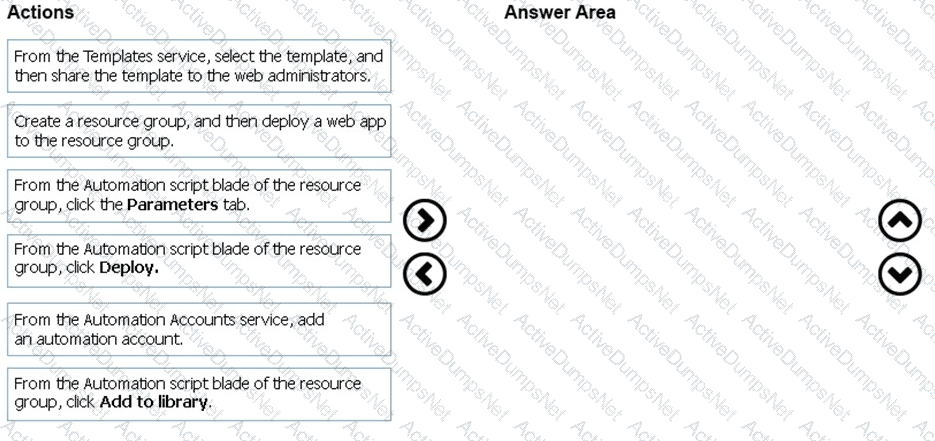
You need to resolve the Active Directory issue.
What should you do?
Which blade should you instruct the finance department auditors to use?
Which blade should you instruct the finance department auditors to use?
You need to resolve the licensing issue before you attempt to assign the license again.
What should you do?
You are evaluating the name resolution for the virtual machines after the planned implementation of the Azure networking infrastructure.
For each of the following statements, select Yes if the statement is true. Otherwise, select No.

You need to recommend an identify solution that meets the technical requirements.
What should you recommend?
You need to identify the storage requirements for Contoso.
For each of the following statements, select Yes if the statement is true. Otherwise, select No.
NOTE: Each correct selection is worth one point.

You have an Azure Active Directory (Azure AD) tenant named contoso.com.
You have a CSV file that contains the names and email addresses of 500 external users.
You need to create a quest user account in contoso.com for each of the 500 external users.
Solution: from Azure AD in the Azure portal, you use the Bulk create user operation.
Does this meet the goal?
You have an Azure DNS zone named adatum.com. You need to delegate a subdomain named research.adatum.com to a different DNS server in Azure. What should you do?
You have an Azure subscription that contains the resources shown in the following table.

You configure Azure Site Recovery to replicate VM1 between the East US and W«t US regions.
You perform a test failove of VM1 and specify VNET2 as the target v>riual network.
When the test version of VM1 is created, to which subnet will the virtual machine be connected?
You have an Azure subscription that contains the storage accounts shown in the following table.
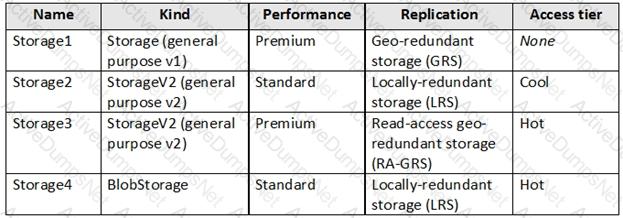
You need to identify which storage account can be converted to zone-redundant storage (ZRS) replication by requesting a live migration from Azure support.
What should you identify?
You have an Azure virtual machine named VM1.
You use Azure Backup to create a backup of VM1 named Backup1.
After creating Backup1, you perform the following changes to VM1:
Modify the size of VM1.
Copy a file named Budget.xls to a folder named Data.
Reset the password for the built-in administrator account.
Add a data disk to VM1.
An administrator uses the Replace existing option to restore VM1 from Backup1.
You need to ensure that all the changes to VM1 are restored.
Which change should you perform again?
You have an Azure subscription named Subscription1 that contains the virtual networks in the following table.
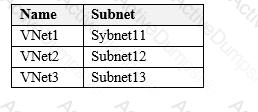
Subscripton1 contains the virtual machines in the following table.

In Subscription1, you create a load balancer that has the following configurations:
Name: LB1
SKU: Basic
Type: Internal
Subnet: Subnet12
Virtual network: VNET1
For each of the following statements, select Yes if the statement is true. Otherwise, select No.
NOTE: each correct selection is worth one point.

You have an Azure virtual machine named VM1. VM1 was deployed by using a custom Azure Resource Manager template named ARMIjson.
You receive a notification that VM1 will be affected by maintenance.
You need to move VM1 to a different host immediately.
Solution: From the VM1 Updates blade, select One-time update.
Does this meet the goal?
You have an Azure subscription that contains a virtual machine named VM1.
To VM1, you plan to add a 1-TB data disk that meets the following requirements:
• Provides data resiliency in the event of a datacenter outage.
• Provides the lowest latency and the highest performance.
• Ensures that no data loss occurs if a host fails.
You need to recommend which type of storage and host caching to configure for the new data disk.
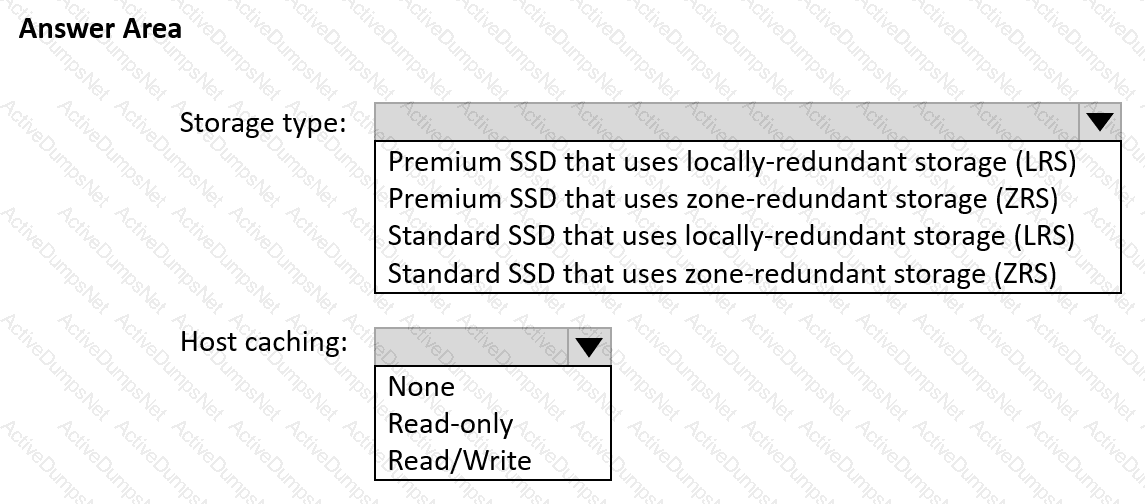
You have the following custom role-based access control (RBAC) role.

For each of the following statements, select Yes if the statement is true. Otherwise, select No.
NOTE: Each correct selection is worth one point.

You have an Azure subscription that contains a virtual network named VNET in the East Us 2 region. A network interface named VM1-NI is connected to VNET1.
You successfully deploy the following Azure Resource Manager template.
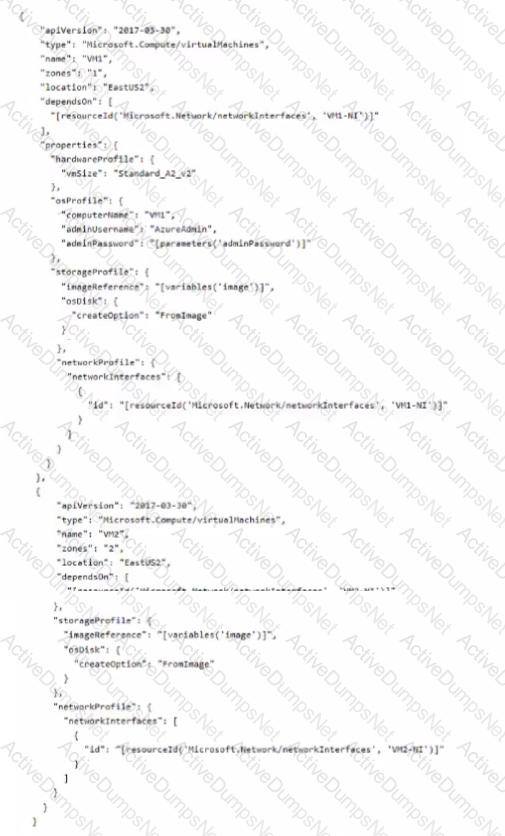

Note: This question is part of a series of questions that present the same scenario. Each question in the series contains a unique solution that might meet the stated goals. Some question sets might have more than one correct solution, while others might not have a correct solution.
After you answer a question in this section, you will NOT be able to return to it. As a result, these questions will not appear in the review screen.
You need to ensure that an Azure Active Directory (Azure AD) user named Admin1 is assigned the required role to enable Traffic Analytics for an Azure subscription.
Solution: You assign the Owner role at the subscription level to Admin1.
Does this meet the goal?
You have an Azure subscription named Sub1 that contains two users named User1 and User2.
You need to assign role-based access control (RBAC) roles to User1 and User2. The users must be able to perform the following tasks in Sub1:
• User1 must view the data in any storage account.
• User2 must assign users the Contributor role for storage accounts.
The solution must use the principle of least privilege.
Which RBAC role should you assign to each user? To answer, drag the appropriate roles to the correct users. Each role may be used once, more than once, or not at all.

You have an Azure subscription that contains the vaults shown in the following table.

You create a storage account that contains the resources shown in the following table.

To which vault can you back up cont1 and share1? To answer, select the appropriate options in the answer area. NOTE: Each correct answer is worth one point.

You have an Azure subscription that contains the resource groups shown in the following table.

You create the following Azure Resource Manager (ARM) template named deploy json.
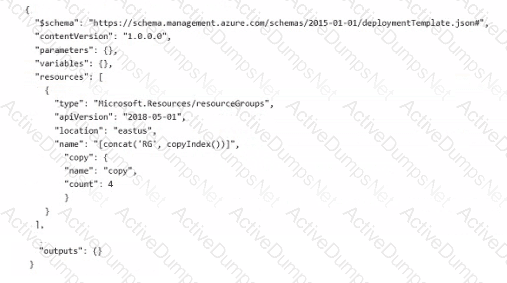
You deploy the template by running the following cmdlet.
Item-AzSubscriptionDeployment -location -Template file deploy-json For each or the following statements, select Yes il the statement is bue. Otherwise, select No.
NOTE: Each correct selection is worth one point.

You have an Azure App Service plan named ASP1.
CPU usage for ASP1 is shown in the following exhibit.
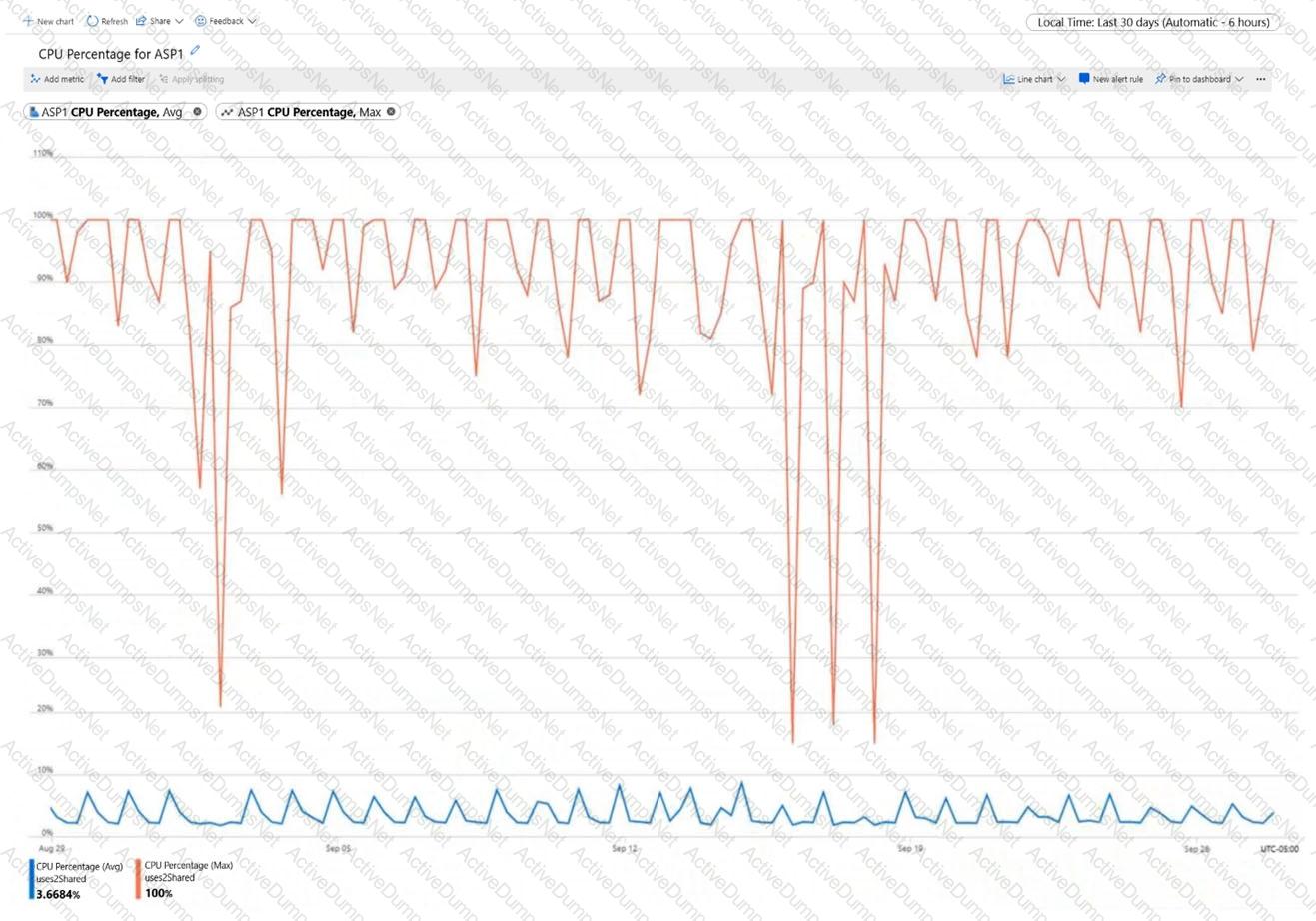
Use the drop-down menus to select the answer choice that completes each statement based on the information presented in the graphic.
NOTE: Each correct selection is worth one point.

Note: This question is part of a series of questions that present the same scenario. Each question in the series contains a unique solution that might meet the stated goals. Some question sets might have more than one correct solution, while others might not have a correct solution.
After you answer a question in this section, you will NOT be able to return to it. As a result, these questions will not appear in the review screen.
You need to ensure that an Azure Active Directory (Azure AD) user named Admin1 is assigned the required role to enable Traffic Analytics for an Azure subscription.
Solution: You assign the Traffic Manager Contributor role at the subscription level to Admin1
You have an Azure subscription that contains the virtual networks shown in the following table.

The subscription contains the virtual machines shown in the following table.

The subscription contains the Azure App Service web apps shown in the following table.

For each of the following statements, select Yes if the statement is true. Otherwise, select No.
NOTE: Each correct selection is worth one point.

You have an Azure subscription that contains a storage account named storage1.
You plan to use conditions when assigning role-based access control (RABC) roles to storage1
Which storage1 services support conditions when assigning roles?
You have an Azure subscription that contains a storage account named storageacct1234 and two users named User1 and User2.
You assign User1 the roles shown in the following exhibit.
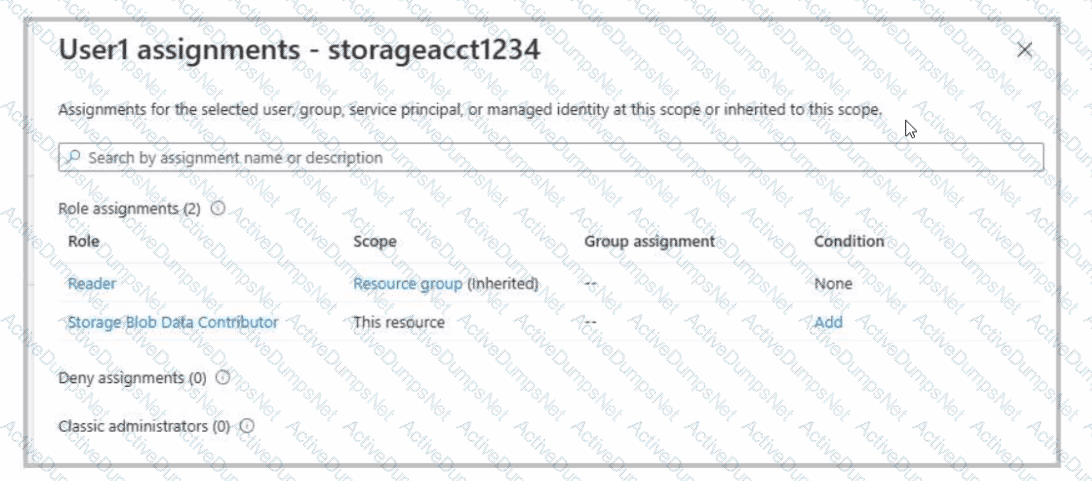
Which two actions can User1 perform? Each correct answer presents a complete solution.
NOTE: Each correct selection is worth one point.
You have an Azure Active Directory (Azure AD) tenant named contoso.onmicrosoft.com.
The User administrator role is assigned to a user named Admin1.
An external partner has a Microsoft account that uses the user1@outlook.com sign in.
Admin1 attempts to invite the external partner to sign in to the Azure AD tenant and receives the following error
message: “Unable to invite user user1@outlook.com – Generic authorization exception.”
You need to ensure that Admin1 can invite the external partner to sign in to the Azure AD tenant.
What should you do?
You have an Azure subscription that contains the virtual networks shown in the following table.

You have the virtual machines shown in the following table.

You have the virtual network interfaces shown in the following table.

Server1 is a DNS server that contains the resources shown in the following table.

You have an Azure private DNS zone named contoso.com that has a virtual network link to VNET2 and the records shown in the following table.

For each of the following statements, select Yes if the statement is true. Otherwise, select No.
NOTE: Each correct selection is worth one point.

You have an Azure subscription named Subscription1 that contains the following resource group:
Name: RG1
Region: West US
Tag: “tag1”: “value1”
You assign an Azure policy named Policy1 to Subscription1 by using the following configurations:
Exclusions: None
Policy definition: Append tag and its default value
Assignment name: Policy1
Parameters:
- Tag name: Tag2
- Tag value: Value2
After Policy1 is assigned, you create a storage account that has the following configurations:
Name: storage1
Location: West US
Resource group: RG1
Tags: “tag3”: “value3”
You need to identify which tags are assigned to each resource.
What should you identify? To answer, select the appropriate options in the answer area.
NOTE: Each correct selection is worth one point.
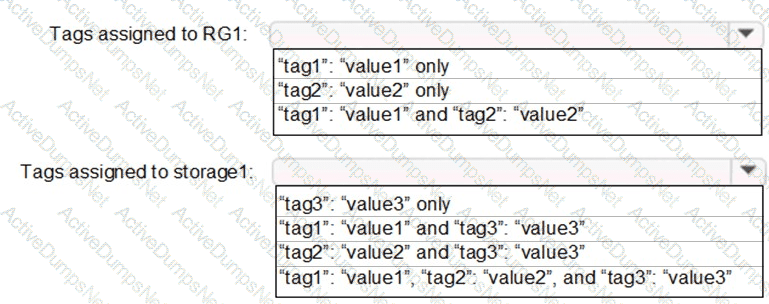
You implement the planned changes for NSG1 and NSG2.
For each of the following statements, select Yes if the statement is true. Otherwise, select No.
NOTE: Each correct selection is worth one point.

You need to configure the alerts for VM1 and VM2 to meet the technical requirements.
Which three actions should you perform in sequence? To answer, move all actions from the list of actions to the answer area and arrange them in the correct order.

You need to add VM1 and VM2 to the backend poo! of LB1. What should you do first?
You need to ensure that User1 can create initiative definitions, and User4 can assign initiatives to RG2. The solution must meet the technical requirements.
Which role should you assign to each user? To answer, select the appropriate options in the answer area.
NOTE: Each correct selection is worth one point.

You need to configure Azure Backup to back up the file shares and virtual machines.
What is the minimum number of Recovery Services vaults and backup policies you should create? To answer, select the appropriate options in the answer area.
NOTE: Each correct selection is worth one point.
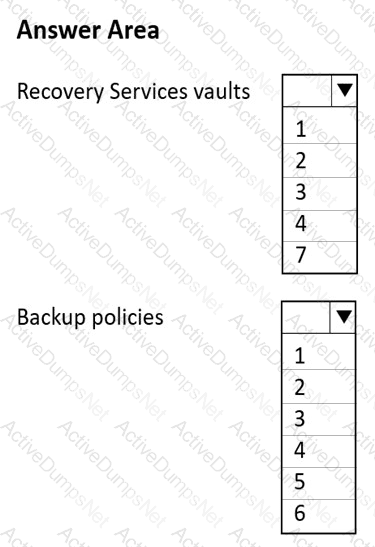
You need to identify which storage account to use for the flow logging of IP traffic from VM5. The solution must meet the retention requirements.
Which storage account should you identify?
You need to create storage5. The solution must support the planned changes.
Which type of storage account should you use, and which account should you configure as the destination storage account? To answer, select the appropriate options in the answer area.
NOTE: Each correct selection is worth one point.
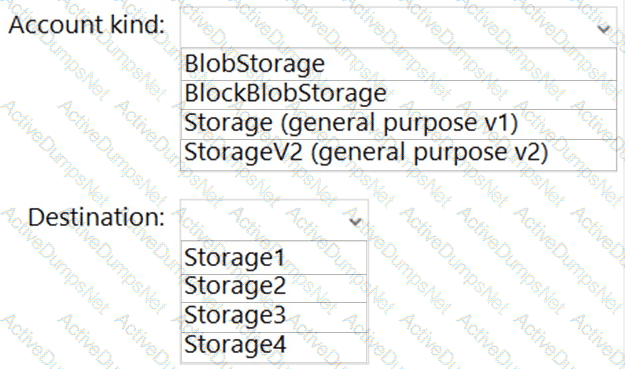
You need to ensure that you can grant Group4 Azure RBAC read-only permissions to all the A2ure file shares. What should you do?
You need to ensure that VM1 can communicate with VM4. The solution must minimize administrative effort.
What should you do?
You discover that VM3 does NOT meet the technical requirements.
You need to verify whether the issue relates to the NSGs.
What should you use?
You need to implement Role1.
Which command should you run before you create Role1? To answer, select the appropriate options in the answer area.
NOTE: Each correct selection is worth one point.

You need to the appropriate sizes for the Azure virtual for Server2.
What should you do? To answer, select the appropriate options in the answer area.
NOTE: Each correct selection is worth one point.
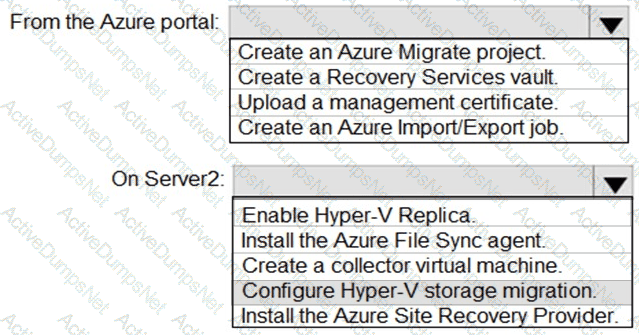
You need to meet the technical requirement for VM4.
What should you create and configure?
You implement the planned changes for NSG1 and NSG2.
For each of the following statements, select Yes if the statement is true. Otherwise, select No.
NOTE: Each correct selection is worth one point.

You need to meet the connection requirements for the New York office.
What should you do? To answer, select the appropriate options in the answer area.
NOTE: Each correct selection is worth one point.

You need to recommend a solution to automate the configuration for the finance department users. The solution must meet the technical requirements.
What should you include in the recommended?








